|
1.
CENTRAL/ WEST AFRICA
Mild weather sustains European timber demand
No significant price changes were reported for Central and West African timber products in early November, except
for okoume logs. Trade continued on an even keel amid steady and good demand. Possibly, the milder weather
pattern in Europe so far had helped the construction
industry to keep busy without the usual delays because of frost or excessive rain.
In the UK, house builders were busy and expected the present trend to continue in spite of the small rise in
interest rates earlier this month. It was hoped that the construction of new stadiums and facilities for the
London 2012 Olympic Games would start slowly after mid-2007 and then accelerate. Olympics related
construction was expected to provide many opportunities for a whole range of hardwood timbers, both temperate
and tropical. Meanwhile, the popularity of wooden
floorings in the UK was still very strong in shops, officers and homes.
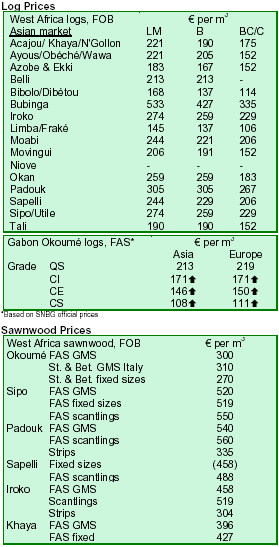
2. GHANA
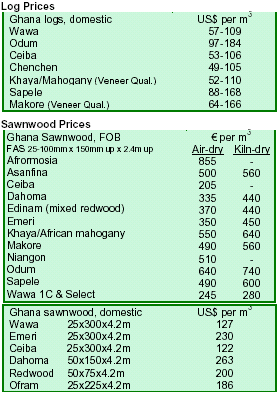
3.
MALAYSIA
Monsoon rains push log prices sharply up
Prices for logs from Sarawak rose fanned by strong demand due to construction and development projects in
India, China and Middle-Eastern countries. The monsoon season helped to push prices further up as logging became
difficult and dangerous in the wet environment. Some timber traders were speculating that prices of logs might
increase by at least 30% by the end of January 2007.
Timber demand in China remained strong in tandem with its economy that was forecast to grow 9.5% in 2007,
according to the Chinese Federal Government Information Center. About 70% of all timber imported by China was
processed into furniture, plywood and other products for export, mainly to the USA, Japan and EU. Demand for
raw material including timber was also strong in India, as the Indian Rupee had been boosted by lower crude oil prices.
Strong Japanese demand fuels booming panel prices
Prices of Malaysian plywood and panel products continued to surge as demand remained strong in Japan.
Panel products, particularly particleboards, were also enjoying a domestic boom as several Malaysian furniture
manufacturers switched over from rubberwood. These developments had caused share prices of several timber
companies to rise in the Kuala Lumpur Stock Exchange.
Sawnwood prices buck rising trend amid slow sales
Compared with other Malaysian primary products, prices for sawnwood were still largely in the doldrums with
marginal price movements. Importers from the main traditional markets such as the Netherlands, Germany, the
UK and France were facing slow sales of their existing stocks. Therefore, they were not prepared to commit
financial resources in more sawnwood imports. Moreover, construction projects in Malaysia were moving slowly as the wet weather continued to hamper work.
Malaysia assures furniture made of legal wood
Malaysia assured UK Deputy Prime Minister John Prescott that it was not exporting furniture made from
illegally logged timber from neighbouring countries into Europe. Malaysia's Natural Resources and Environment
Minister, Azmi Khalid, explained that manufacturers must show certification of the timber's origin and state the type of wood used.
Mr. Prescott, who visited the Forest Research Institute of Malaysia, also raised claims by lobbyists that Malaysia¡¯s
oil palm industry was endangering wildlife. Mr. Azmi denied the allegations, saying these were made by lobby
groups promoting soya oil and soya products that competed directly with palm oil. Apart from its own forest
reserves, Malaysia had agreed with Indonesia and Brunei
to designate a 2 million ha area in Borneo (almost the size of England) as a wildlife reserve, Mr. Azmi added.
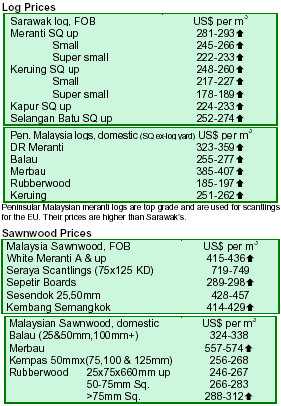
4.
INDONESIA
Importers look at Indonesia for timber supply
Prices for Indonesian timber products, especially plywood, rose in early November as more importing countries took a
second look at Indonesia as an additional supplier of timber products, albeit concerns over source and poor
infrastructure. Some importers had expressed worries about the tight raw material supply situation in Malaysia.
Importers from India were particularly interested in Indonesian timber products to meet the mid-range to
low-end markets. This had motivated Indonesian exporters to explore markets in Pakistan and Bangladesh. Indonesia
was also seeking more interest from China. Having China's enormous consumption of raw materials in mind,
the Indonesian House Speaker Agung Laksono had endorsed the Indonesian House of Representative to attract
more Chinese investment into Indonesia. Indonesia was also intending to address non-tariff barriers in the form of
strict quality standards imposed by Japan on timber products.
Indonesia set to support deforestation coalition at UNFCCC
Indonesia was planning to bring the issue of forest conservation as a way to control global warming to the
United Nations Framework Convention on Climate Change (UNFCCC), in Nairobi, Kenya, on November 6-17 2006. Dadang Hilman, member of the Indonesian
delegation, said that Costa Rica and PNG who had brought a similar issue to the UNFCCC meeting last year, had
asked Indonesia to join the coalition. Indonesia was still considering the invitation, he explained. The formation of
the special coalition, according to Mr. Hilman, was intended to create a compensation mechanism for
advanced countries to support the prevention of deforestation in countries with tropical forests and assist
their national economies. He said Indonesia would probably take up the same position as these countries and
would join the coalition because they were fighting for the same interest.
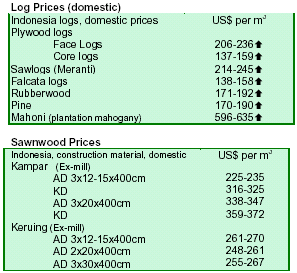
5.
MYANMAR
Veneer grade teak logs gain higher prices
October teak log's tender was reported to have had a relative smaller attendance compared with previous
months. Average prices for veneer grades 2nd, 3rd and 4th qualities climbed, while those for sawing grades SG-1,
SG-2, SG-4 and SG-5 fell. Some buyers indicated that price declines were due to lower quality of the SG grades.
The SG-1 average of .2,171 was the second lowest in the
six months since May 2006, with that of July (.2,025) being the lowest. The SG-2 average of .1,556, in turn, was
the lowest since May.
In terms of markets, log veneer qualities went mainly to Europe while sawing grades were sold mainly to Eastern
countries. There were no Indian companies bidding in the tenders, presumably due to the Eid and Deepavali holidays
in late October.
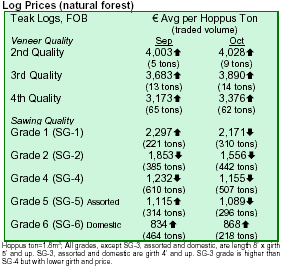
Demand for gurjan logs holds at lower price level
The market for other hardwood logs showed mixed results. Pyinkadoe logs were not selling well as buyers argued that
prices listed since July were high. In contrast, the market for fresh gurjan (keruing) logs was reported to be good.
There was a sealed tender sale for two lots (about 317
tons) of gurjan logs at an average price of .185 (about $234). However, compared with the December average
listed price of $295-320, the tender sale price seemed low. Buyers felt that the quality of the logs in sealed tender sales was lower than those seen in direct sales.

6. PAPUA
NEW GUINEA
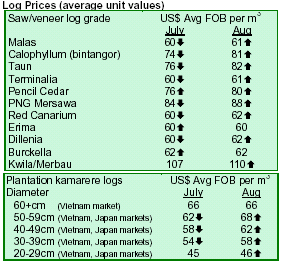
7.
BRAZIL
Deforestation decelerates in Mato Grosso
According to the Forest Transparency Report for Mato Grosso, the deforestation area fell 63% in the year to
August 2006. This was probably due to declining prices for agriculture commodities and higher government
control on log felling. According to data from the System of Deforestation Alert (SAD), deforestation in Mato
Grosso reached 106 km2 this year (compared to 288 km2 in 2005 and 360 km2 in 2004). Out of this total, 89% were in
rural properties, half of which was not registered in the System of Environmental Licensing in Rural Properties
(SLAPR), the state's property control tool. The remaining deforestation occurred in areas of rural reform (9%) and
forest protection (2%). About 76% of the deforestation in forest protection areas took place in Kayabi Indigenous lands. Some analysts feared that the deforestation rate might increase again if commodity prices
recovered.
Plantations help companies face crisis
Companies that have forested areas have mitigated the effects of one of the worst crisis suffered by the Brazilian
solid-wood sector in the past few decades. The sector was poised to shrink for the second consecutive year due to the
continued appreciation of the Brazilian currency that had
reduced exports drastically and increased raw material costs as well as the fall in prices of some wood products caused by the slumping US housing market.
The weakening of the US dollar (down 26% against the Brazilian reais over the last 22 months) had resulted in
lower profit or unprofitable export contracts. At least 12 large solid-wood producers had shut down, according to
ABIMCI. In addition, the US market was demanding less plywood for house construction, influencing prices
worldwide. US imports of Brazilian plywood dropped 15% in the first half of 2006 compared with the same period in 2005.
Companies counting on timber sources from their own forest plantations were reported to be in a better position
to invest in machinery and industrial plant upgrades in order to improve their opportunities when market
conditions turn favourable. Some companies were even expanding plantation areas as a strategy to increase solid
wood production over the next decades either for the manufacturing of timber products or for sales of logs to
other companies (solid-wood, pulp and paper mills) as raw material for their industrial production.
Curitiba hosts Plantation Congress and Investment Forum
The Third International Congress on Solid-wood Products from Plantation Forests will be held on November 20-22
in Curitiba, Brazil. The main theme of the Congress promoted by ABIMCI is ¡ˇăPlanted Forests: products and
businesses¡ˇŔ. The Congress will evaluate the current scenario and perspectives for the solid-wood industry from planted forests.
The Congress will be followed by the ITTO Latin American Tropical Forest Investment Forum at the same
location on November 23-24. The regional forum will be an opportunity to discuss issues and investment
opportunities in natural tropical forests in Latin America. It will focus on regional investment trends, constraints and
opportunities for increased investments in natural tropical
forests, methodologies, case studies, analyses and legislation that influence investments for revenue
generation, including markets for forest services and non-timber forest products. Both events are expected to
attract a large participation from public and private sector agencies and companies involved with forestry and wood
processing.
Brazil denies cutting Amazon forests for soy and beef
Brazil has rejected international criticism that it was sacrificing the Amazon rainforests to produce soy and
beef. The Minister of Agriculture, Luis Carlos Guedes Pinto, said that only 0.27% of
Brazil's soybean crop was
grown in the Amazon region. Regarding Brazil's beef exports, less than 1.5% of the production came from the
Amazon, Mr. Guedes said. He added that Brazil farmed 62 million ha and could cultivate an extra 50 million ha by
using degraded pasture without ¡ˇăcutting down a single tree.¡ˇŔ
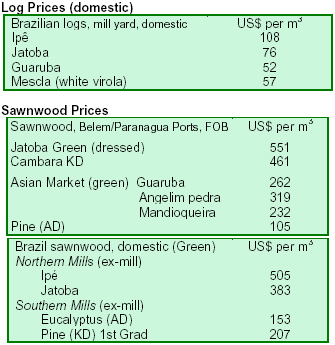
8. PERU
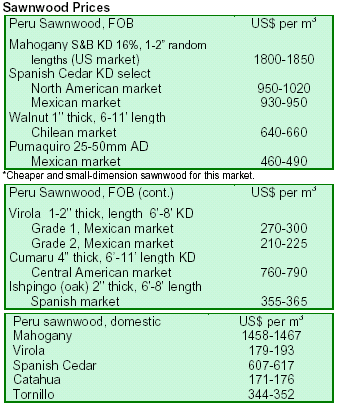
9. BOLIVIA
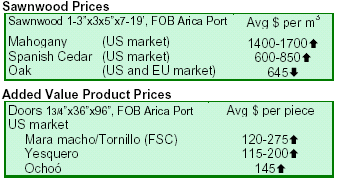
10. Guatemala

11.
Guyana
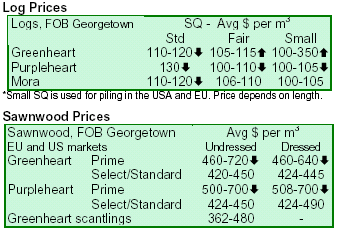
|